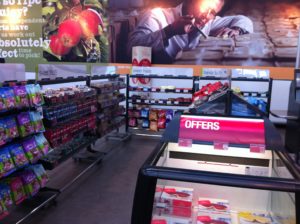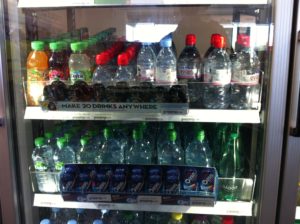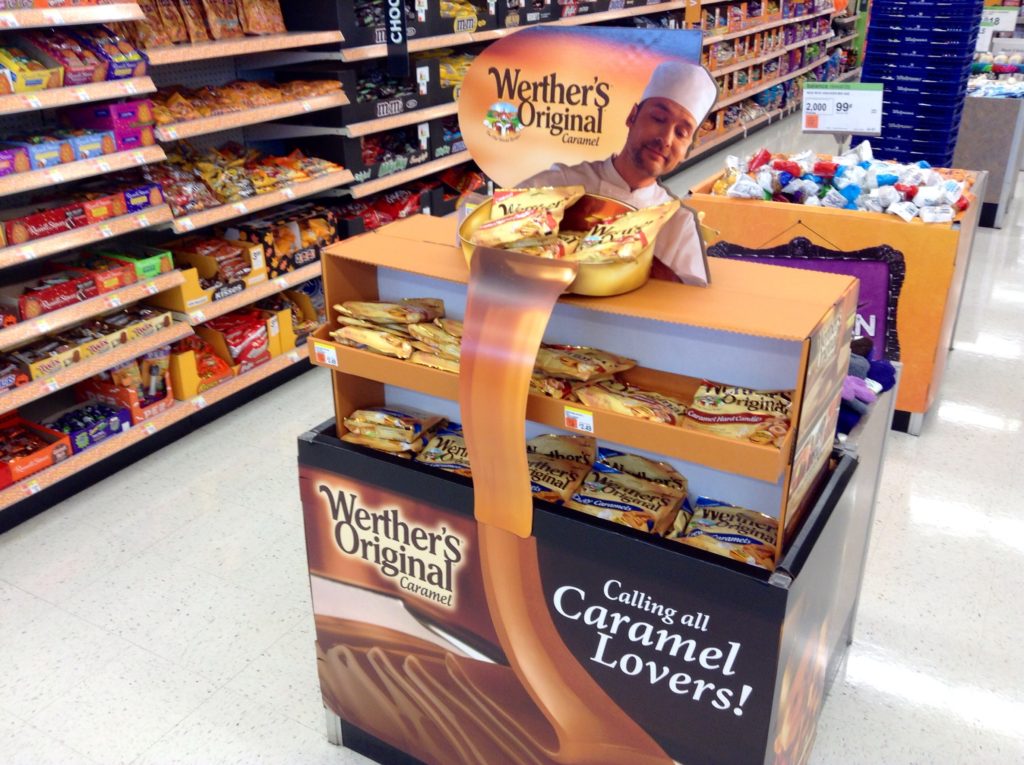As you can imagine, I spend quite a lot of time trawling around stores looking for new and interesting shopper marketing activity. Shopper marketing is all about influencing shoppers to change their behavior. One way of changing shopper behavior is to encourage impulse purchase. Here are three key strategies, together with some great examples, of how to drive impulse purchase.
Impulse purchase strategy 1: Use the queue

UK retailers are increasingly turning to self-serve payment points. This is changing the queuing environment as lines become consolidated. Retailers like WH Smith, BP Connect and Marks and Spencer are responding to this by creating ‘queue zones’ which segregate shoppers who are checking out from those in the main store. These ‘queue zones’ are excellent environments to drive impulse purchase, offering a space for shoppers to top-up their baskets with extra treats that boost store profitability. Brands in impulse categories can capitalize on this space by optimizing their position on shelf, creating engaging communication devices and by creating offers to increase purchase weight.
Impulse purchase strategy 2: Site it right

Impulse purchase strategy 3: Nail the display

Off-shelf display is a regular order of business for most brands but so often displays on gondolas do little to arrest shoppers. This Halloween-themed display is a great example of how to create stopping power. There’s a number of impulse options that shoppers in this Marks & Spencer Simply Food store would probably add to their basket during the season. It’s effective because it’s sufficiently far into the store whilst being visually impactful. Pumpkin anyone?
The key to driving impulse purchase – outstanding in-store execution
All of these examples are cited because they are great at driving impulse both for the brand and the retailer. But they’re also, on observation, consistently well executed across the retail base. It’s clear that significant time, effort and expense has gone into ensuring that plans have been carefully drawn up, equipment has been efficiently designed, manufactured and delivered and store managers have been well briefed.
The casual observer might imagine that these ‘simple strategies’ are easy to execute – they’re not. For brands who really wish to capitalize on the impulse opportunities modern retailing offers I would offer a few words of advice:
- Set a clear behavioral objective – define what additional consumption you want to create and think carefully about how the behavior of your target shoppers needs to change to drive this. Be clear about where this behavior will happen and what needs to be done to deliver the change.
- Share the upside with your retail partners – retailers are rightfully retrospect about throwing themselves behind impulse initiatives: They have to deliver economic benefits as well as resonate with the strategy the retailer is following. Successful propositions illustrate how the brand is likely to deliver against all relevant factors.
- Keep it simple – in retail, if it can go wrong, it will go wrong! Pair back the concept to its essentials and then communicate what is needed, where and when, clearly and concisely to everyone.
For more on how to make your shopper marketing work harder at changing shopper behavior, don’t forget to subscribe to this blog.


